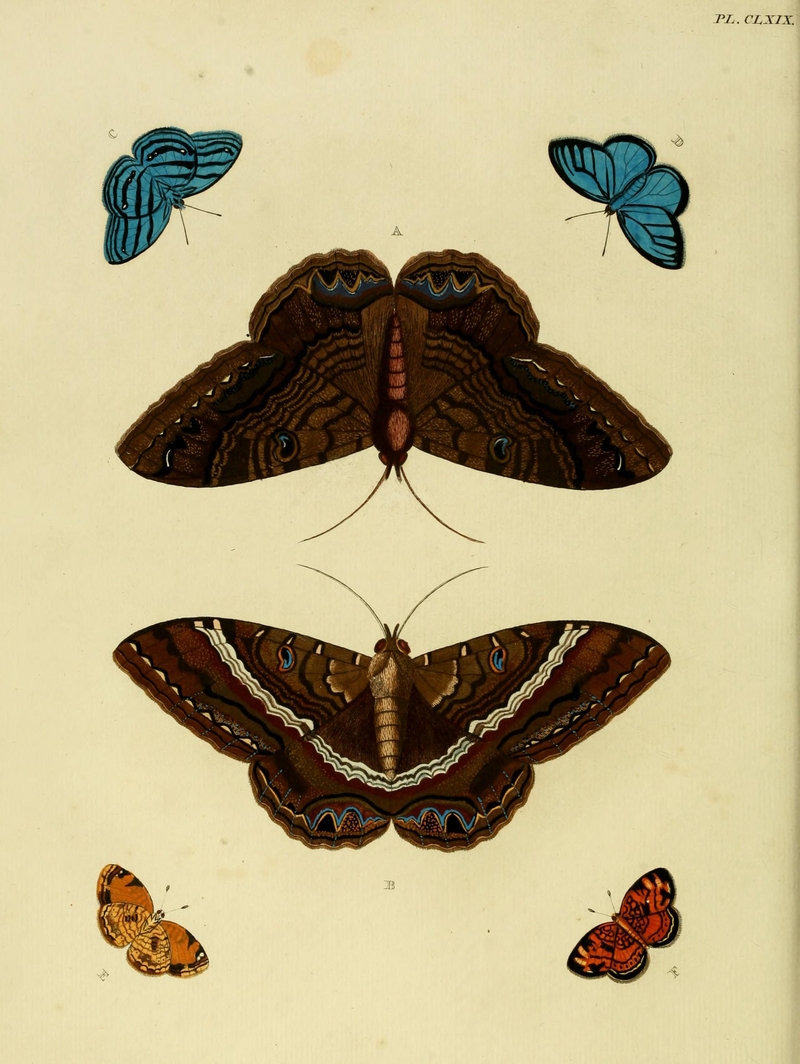Black Witch Moth (Ascalapha odorata), Cepheuptychia cephus, Pearl Crescent (Phyciodes tharos) Description Plate CLXIX
- A (♂), B (♀): "(Phalaena) Odora" ( = Ascalapha odorata)
- C, D: "(Papilio) Lysidice" ( = Cepheuptychia cephus)
- E, F: "(Papilio) Tharos" ( = Phyciodes tharos)
Date 1779
Source Volume 2 of "De uitlandsche kapellen: voorkomende in de drie waereld-deelen Asia, Africa en America = Papillons exotiques des trois parties du monde, l'Asie, l'Afrique et l'Amérique"
Author Pieter Cramer (1721 - 1776) and Caspar Stoll (between 1725 and 1730 - 1791)
Source: https://commons.wikimedia.org/wiki/File:CramerAndStoll-uitlandsche_kapellen_vol._2-_plate_169.jpg
The black witch moth (Ascalapha odorata) is a large bat-shaped, dark-colored nocturnal moth, ranging from Brazil to the southern United States. It is the largest noctuid in the continental United States. In the folklore of many Central American cultures, it is associated with death or misfortune.
Cepheuptychia cephus is a species of satyrid butterfly found in the Neotropical realm.
The pearl crescent (Phyciodes tharos) is a butterfly of North America. It is found in all parts of the United States except the west coast, and throughout Mexico and parts of southern Canada, in particular Ontario. Its habitat is open areas such as pastures, road edges, vacant lots, fields, open pine woods.
Order: Lepidoptera
Superfamily: Noctuoidea
Family: Erebidae; Nymphalidae; Nymphalidae
Species: Ascalapha odorata (Linnaeus, 1758), Cepheuptychia cephus (Fabricius, 1775); Phyciodes tharos (Drury, 1773)
